Your hosts at Roter Hahn
With an outstanding crew, we work together to give our guests unforgettable evenings and stays with us at Roter Hahn.
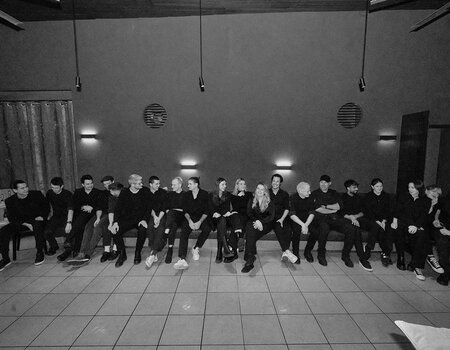
With an outstanding crew, we work together to give our guests unforgettable evenings and stays with us at Roter Hahn.
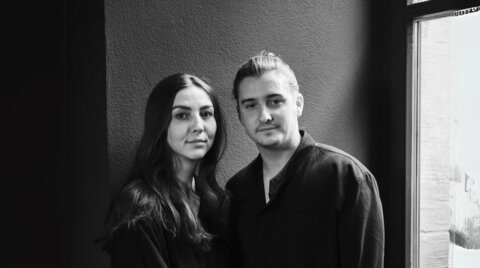
In a colorful A to Z, Maximilian, with the support of Laura, gives a little insight into what is important to him and what makes his cuisine stand out.
A for (Southeast) Asia. Vietnam, Cambodia, Sri Lanka, Thailand, Singapore … we don’t only love the country and its people, but also the original cuisine, which we have encountered on many trips either on the streets at soup stalls (“The best soups are …”, well, just ask us personally), in restaurants or at spontaneous invitations of hospitable local families. Everything else … see, like inspirations
B for "bodenständig" which means down-to-earth. A multi-layered concept that begins in the tradition of our house, is found in the regionality of our products, avoids the exaggerated celebration of some star cuisine and guarantees our guests without suit and evening dress a very relaxed evening in our restaurant. For us personally, however, down-to-earthness also means, above all, remaining curious and open-minded. Anyone who has ever tasted bacon dumplings and Schlutzkrapfen from a cooking mom in South Tyrol knows what we mean.
D for discussion. Whether it’s just the two of us visiting a restaurant (“What ingredients are in the dish, what else might go with it?”) or with the entire team: Since everyone has different tastes, it’s important and exciting for me to have an intensive exchange about dishes and their effects. Philosophizing about food, talking about it, experimenting and tasting – it can take weeks before a menu appears on our plate.
E for easy. Very often the core of star gastronomy is the appreciative attention to originality, pure products and authentic flavors. Good is always also simple, which can make it very demanding for the chef.
F for fantasy. In order to develop properly, it needs routine. Because only this sets standards and is the prerequisite for achieving mastery in one’s profession. This, in turn, requires a great deal of imagination in star cuisine.
G for guest. We don’t just want a satisfied guest, our aspiration is to conjure up a sense of wonder and a sparkle in their eyes. We are delighted about an all-round successful evening when we, as a team, share our love of the culinary arts with our guests – and when the guest perhaps even says with honest joy and great pleasure: “I didn’t expect that!”
H for "heikel" which means picky. Until he was ten years old, the young star chef – like most children – was extremely limited in his choice of food. That has changed over time, because today he will eat anything, as long as the quality is right: From the product to the preparation. Then he also enjoys a sweetbread.
I for inspirations. Each of my previous stations as a chef still inspires me today. And new impressions and ideas are added almost daily, not least my wife and my team are a great source of inspiration. I have learned, especially in the international star cuisine, that with increasing experience one has better and better “plans”, so that in the search for new dishes the failures become fewer.
K for "Kreativität" which means creativity. For me, it always has something playful about it. It’s very helpful to stick to stories so that creativity doesn’t seep away haphazardly. Those that you hear and those that you want to tell yourself. That can be a concrete explanation of why pig tails are special, but it can also be a figurative story of how a menu spans from appetizer to dessert. Laura, my team and I like to look for stories. For our guests.
L for "Lebensmittel" which means food. There are no compromises here at the “Roter Hahn”. Here only quality, quality and quality counts. Whether vegetables, salad, fish, meat and all ingredients – you notice the difference. High-quality food, which is so much more than bare food, we prefer to obtain from regional producers and partners. They demand care and mindfulness – and are much more fun to process.
M for modernity. Everything new requires the old. Either because one consciously works against it, or because one builds on it. Our cuisine does not follow confrontation, but rather further development. That means: Our basis is the classic French cuisine, from which we take the heaviness – for example with light acidity, preferably with an Asian or Scandinavian “touch”. By fermenting a lot, we create lightness, and by finishing fish and meat on the yakitori grill, we succeed in creating a special barbecue flavor.
N for nature. Is not only a source of strength in leisure time, but also a claim in the kitchen. You have to taste nature.
P for perfect. Maximilian knows no compromises in the kitchen. Everything has to be polished and in place, and the work processes have to be followed very precisely. He can also be strict here if necessary, “but in his free time he’s more the casual type,” says Laura with a smile.
R for "Ruhepol" which means pole of tranquility. Laura is just that, but much more for Maximilian. She is his left AND right hand, “who makes everything we do possible in the first place. What else unites the young couple: “We talk about everything, understand each other even without words, are incredibly happy to be together and love – across the board – any kind of gastronomy, as long as it’s delicious and fun.”
S for sauces. In some kitchens without special attention, they have matured in the “Roter Hahn” to a special art form. With Laura as a special fan: “The sturgeon sauce is simply awesome!”
T for team. We grow together and with each other. We are fortunate to be able to work with an outstanding team; we are all driven by the unconditional desire to bring out the maximum in our culinary art and to prepare a wonderful evening for our guests. Discipline, ambition, passion, creativity – it is always exciting for me to see how we live the same philosophy. The only drawback: sometimes there’s too much input from my people.
V as in vegetarian or vegan. The first is always available as an alternative, the second gladly on request. Our philosophy includes the appreciation of the animal, which means: On the one hand we use animal products with moderation and purpose, on the other hand we pay our respect with a perfect processing.
W for "Wohnzimmer" which means living room. It is important to us to give our guests a nice feeling of “home”. Only in a feel-good atmosphere is it possible to enjoy our food consciously and attentively. The interior of our restaurant is stylish, but also very cozy, with Italian music from the record player, for example. It’s the details that add up to a coherent whole.
And most importantly, our service is professional and casual, friendly and discreet. Each and every one of us acts with a very cool and casual matter-of-factness as if it were his or her own establishment – that’s exactly the plus of casual attention that goes down well with our guests.
An unintended consequence of this relaxed attitude is that, especially in the summer, with the windows and doors open, tourists stray into our restaurant and are amazed to find themselves in a starred restaurant. Of course, some leave, but others stay, which no one has ever regretted.
Z for "Zubereitung" which means preparation. Our goal is to keep perfecting them, to push them to the limit with new accents and perspectives on ever new terrain; this is our ambition and our passion. A good example of our philosophy is the Oberpfälzer Spiegelkarp (mirror carp). Before we dry-age it for five days, it is soaked in brine to lose the last of its original “tumminess”. The carp then has a completely changed meat structure and is now perfect as a very intensely aromatic sashimi.
We grow together and with each other. We are lucky to be able to work with an excellent team, we are all driven by the unconditional desire to bring out the maximum in culinary art from us and to prepare our guests a wonderful evening, which they will remember for a very long time with a satisfied smile.
Discipline, ambition, passion, creativity – it is always exciting for me to see how we live the same philosophy. How my “ideas” fall on fertile ground and are implemented in a congenial way. For me, it’s clear that the Michelin star is something we “earned” as a team.
We do not believe that a kitchen has to have a rude tone due to tension, hectic, lack of time, etc. On the contrary, we have a lot of fun despite all the seriousness. “Like a second family”: I think we’re pretty close here.
What is very important to me is that our employees, and of course my wife and I, need time and breaks to recharge our batteries. That’s why we have three days off per week. That may be unusual, but it’s the prerequisite for an honest, relaxed atmosphere that our guests appreciate.
Maximilian Schmidt
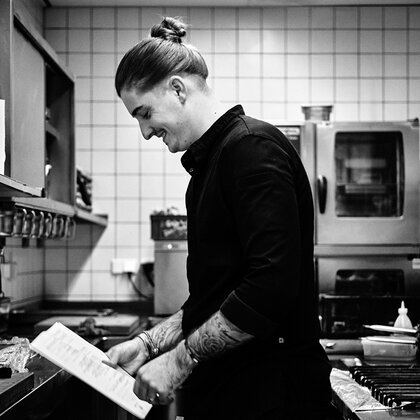
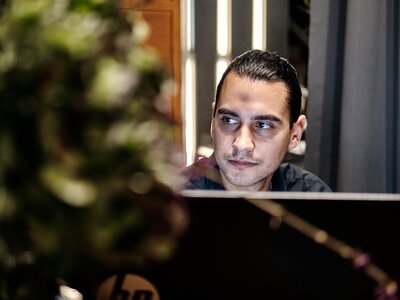
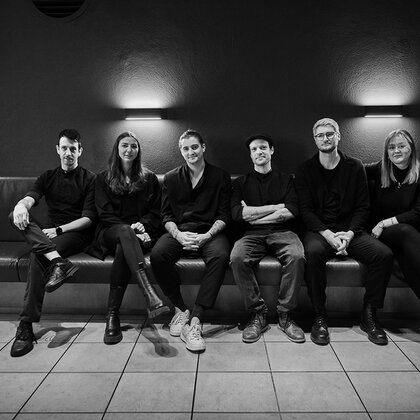
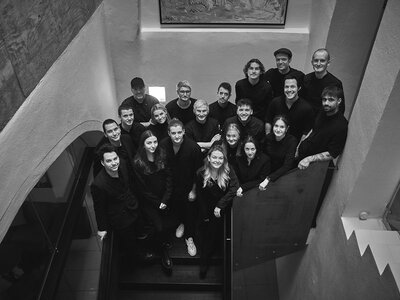
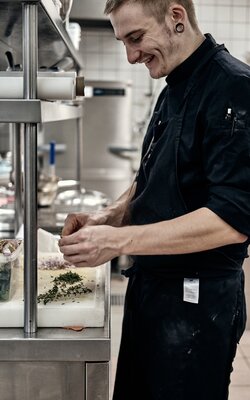
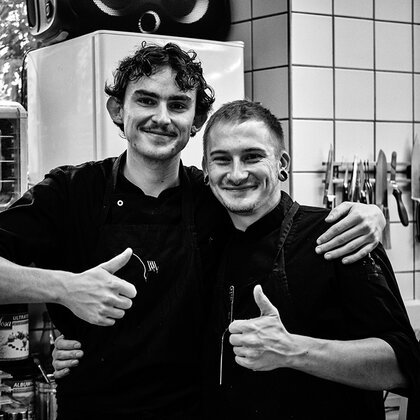

We don’t say “no” to recruitment, which is why we are always happy to receive applications from the catering and hotel industry. Are you the right cover on our pot?
This website uses cookies to analyse website traffic and to optimize content and ads from Google Ads (Google LLC, 1600 Amphitheatre Parkway Mountain View, CA 94043, USA). Only anonymised data is collected. Further information: Imprint (german), Privacy policy (german)